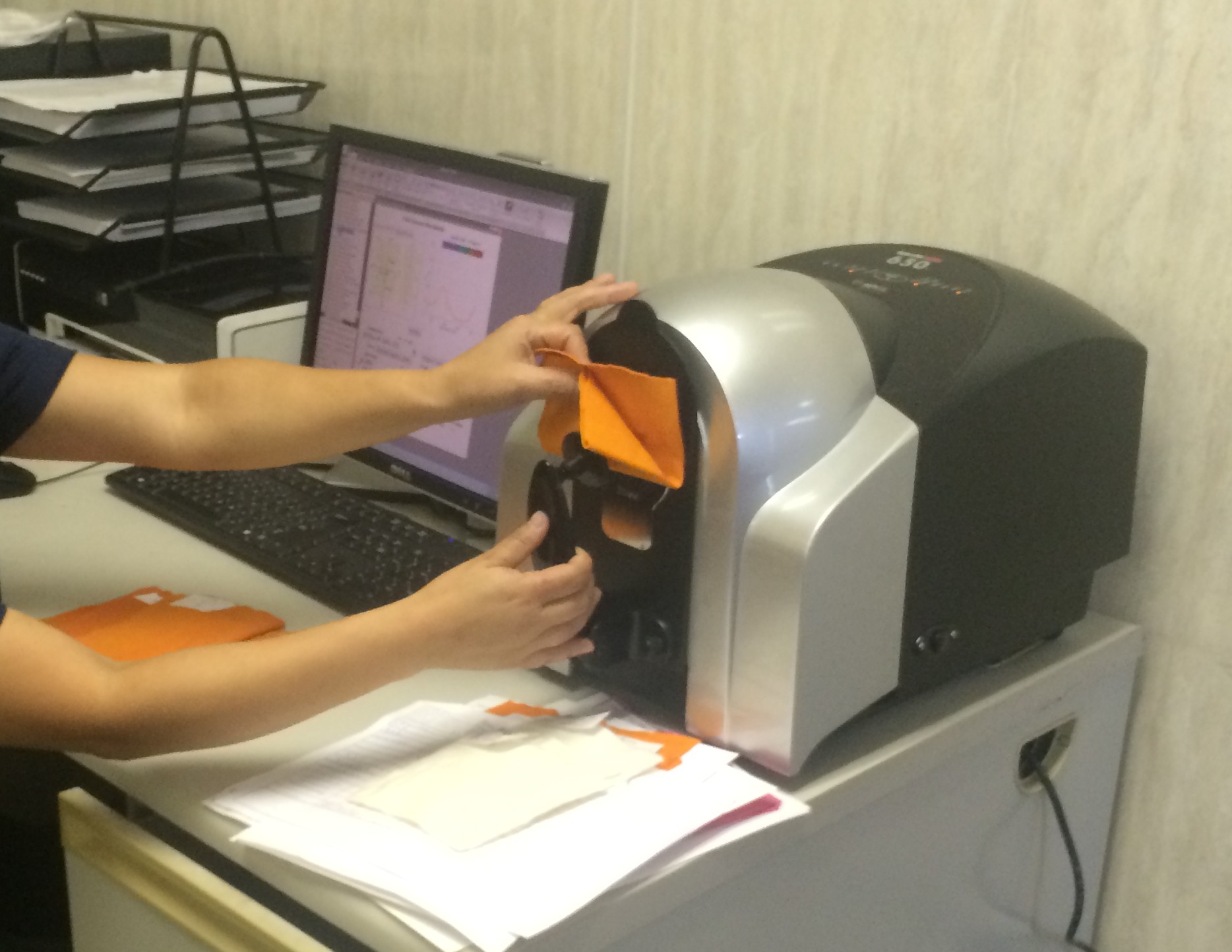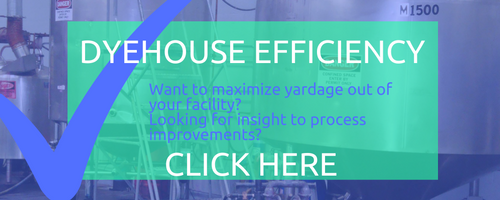Control Yardage Waste to Add Profit to the Bottom Line
Controlling yardage waste in a dyehouse can have a critical influence to your operational costs. From managing sample sizes, to insuring proper employee training, maintaining a standard operating procedure at different levels of your operations process can put valuable dollars back into profits instead of wasted operational costs.
We’ll outline several factors and tips to consider related to a textile dyeing operation here, but many of these same principles can be applied to other industries.
Controlling the Sample Size for Testing
Textile dyeing typically has the following operational structure: knitting,  batching, pretreatment, and dyeing. Following this main process flow, wet finishing and finishing put final effects on the textiles. Re-inspection, final inspection, and packaging make sure quality is 100% within spec and ready to send off to the customer.
batching, pretreatment, and dyeing. Following this main process flow, wet finishing and finishing put final effects on the textiles. Re-inspection, final inspection, and packaging make sure quality is 100% within spec and ready to send off to the customer.
Most dyeing operations require samples to be taken at every stage of this dyeing process. Controlling the size of the samples taken can reduce waste and increase profitable yard output. The minimum amount should be taken from each lot to conserve yardage. To insure this, the operator responsible for harvesting the sample should be informed of the importance of taking only the required sample size. More, or less, can result in yards of wasted fabric for no benefit to the operation.
Two areas to monitor this include pretreatment and dyeing, and reinspection and final inspection. I advise to take the following tips into consideration when cutting samples.
- Pretreatment and Dyeing – Cut samples as close to the seams as possible. Do not cut samples one yard up from the seams. This will conserve usable fabric for the rest of the dye process and prevent lost yardage.
- Reinspection and Final Inspection – Samples are taken at many points during these inspections for quality. This includes crocking, wash fastness, wicking, DWR, ounce weight, and other necessary tests. Here again, controlling the sample size will allow for these tests to only get the amount of textile necessary to review.
Sewing Seams with Conservation in Mind
Similar with cutting samples conservatively, we also need to sew seams in with as little waste as possible. There are many areas we can manage this in the dye process, here are a few to consider.
- Batching – Sew batch seams tight to maximize the yardage.
- Wet Finishing – When resewing seams, sew tight with preventing waste. Do not start three or four inches on each side of goods (or more). Per roll, this will add 6 – 12 inches of wasted fabric per roll. Keep it tight!
- Napping and Finishing – Same concept here. Do not sew out three to six inches when resewing seams. Make each cut across the fabric with a sharp scissors or cutting tool so you can sew close to the cut marks and not further down the roll.
Overall Methods to Control Yardage Waste
At each area where cuts or sew-ins are made, a waste container should be for cut fabric. The excess taken in each area needs to be recorded at the end of each shift. If areas are producing more than expected, additional training in this area will increase yardage for shipping and help bottom line profits. Between cutting for samples and sewing in with minimized seams, you will see additional fabric leave your dyehouse to your customers’ hands.
Looking for more insight on dyehouse safety, lean manufacturing tips, and overall textile operations management? Follow the link below by clicking the button.



